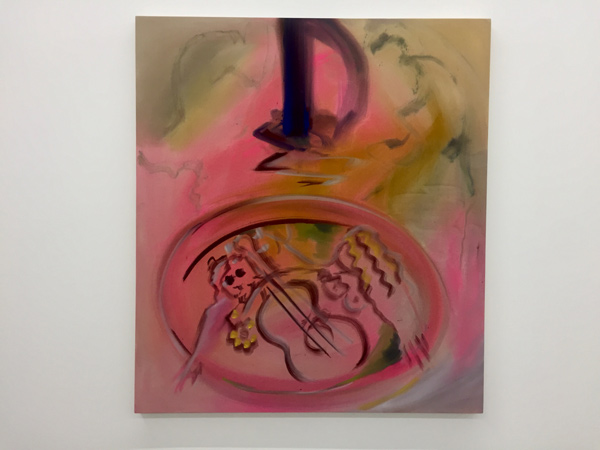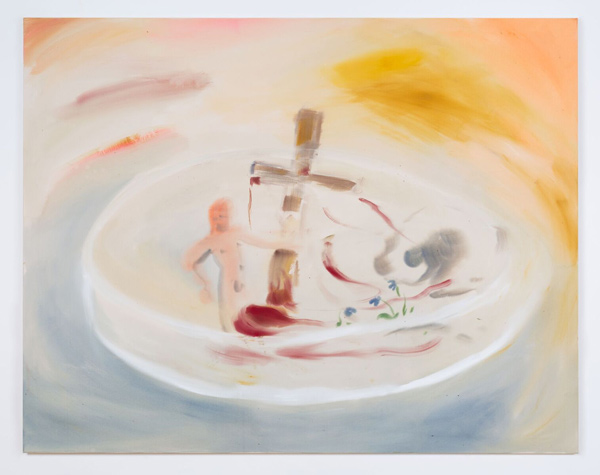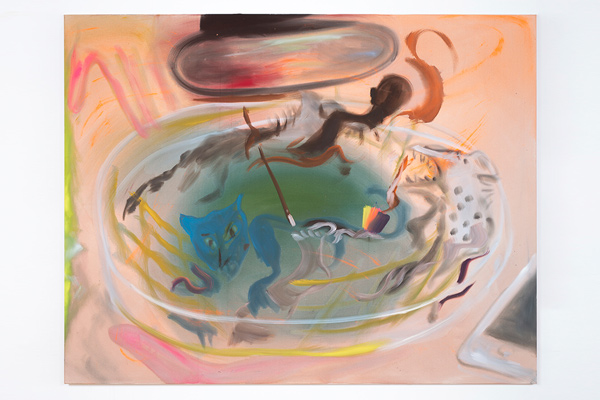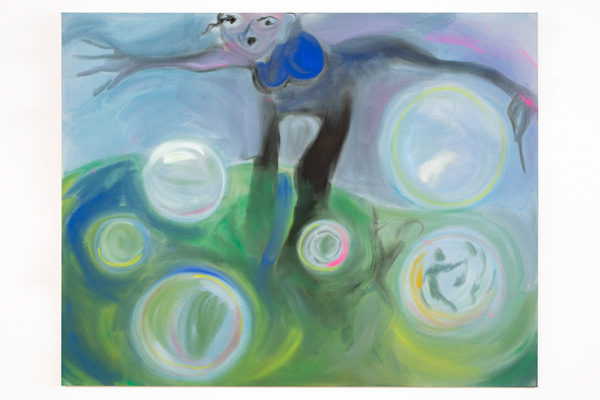Across a series of ethereal vignettes in Sophie von Hellermann’s new series, the petri dish operates as both a quirky formal motif and a sophisticated allegorical framework. Each of the mostly large-scale paintings (all acrylic on canvas, all 2018), display a picture plane tipped forward, raking like a stage so that the “dishes” are flattened, but without fully losing their form and function as containment. Her scenes play out within these shallow circular confines.

Sophie von Hellermann, Electric Cool Aid Acid Test (2018). Acrylic on canvas. 46 x 42 inches. Photo: Shana Nys Dambrot
The series premise evokes a science set-up, like an experiment or specimen array. Culture itself is a word with meanings in both society and laboratory. The recurrence of microscopes, gloved hands, and medical-type instruments here and there in several paintings reinforces this idea. But at the same time, the containers also skip through a sweep of art historical tropes, from the “Unicorn in Captivity” and its famous low white fence, to the saintly halo of religious icons, or crest-lozenges in court portraits common to the Renaissance aesthetic, both Italian and Northern.

Sophie von Hellermann, Canterbury Bells (2018). Acrylic on canvas. 71 x 90 inches. Courtesy of the artist and Parrasch Heijnen.
There are also clear references to core modern emblems of art history, such as languid guitars borrowed from Picasso in Electric Cool Aid Acid Test; floating dancers evoking Matisse in Ballet, and also in Strange Growth; glowing grass in neon poofs like Kandinsky’s poplars in Bursting Bubbles; a striking cross on a hill and what might be architecture in Canterbury Bells; animal spirits in Hyenas and Kraken Under Scrutiny. In all cases, things are both seen and sensed.

Sophie von Hellermann, Hyenas (2018). Acrylic on canvas. 71 x 92 inches. Courtesy of the artist and Parrasch Heijnen.
There are human forms and even portraits present as well, but these and indeed all the figures are ghostly, they waver and hover like apparitions in opium smoke. This is partly due to von Hellermann’s breezy rendering, but mostly due to her treatment of the acrylic pigment. She presses her color firmly and smoothly into the canvas, in a methodology linked to Frankenthaler but in the service of narrative and imagery, of actual pictures, beyond pure gesture. Her surfaces can’t be worked in any sense of painterly, so her figures stay ethereal and, like Turner’s, her atmospherics are rife with signs of life.
Sophie von Hellermann, Petri Dishes, June 23 – August 18, 2018, at Parrasch Heijnen, 1326 S. Boyle Avenue, Los Angeles, CA 90023. www.parraschheijnen.com


